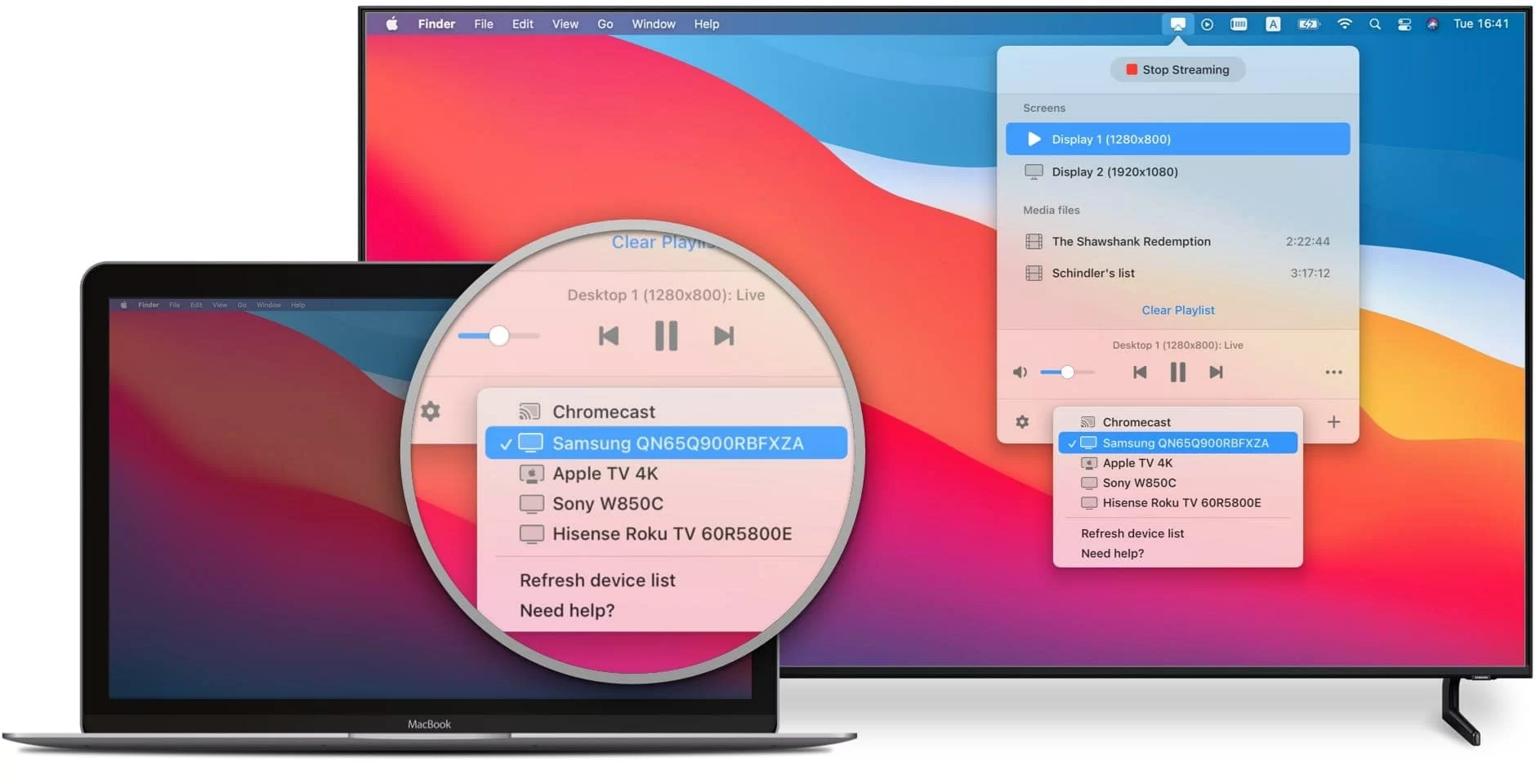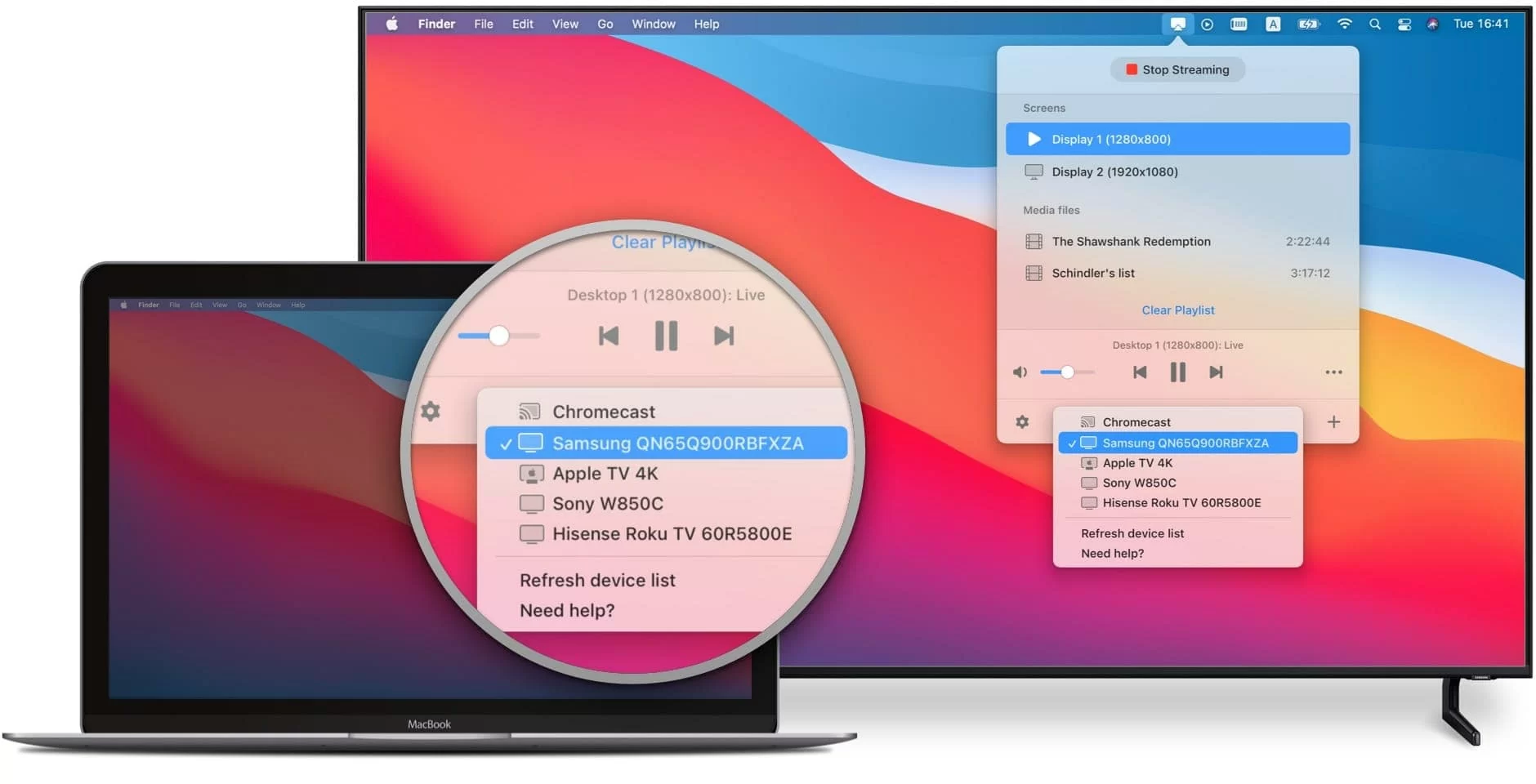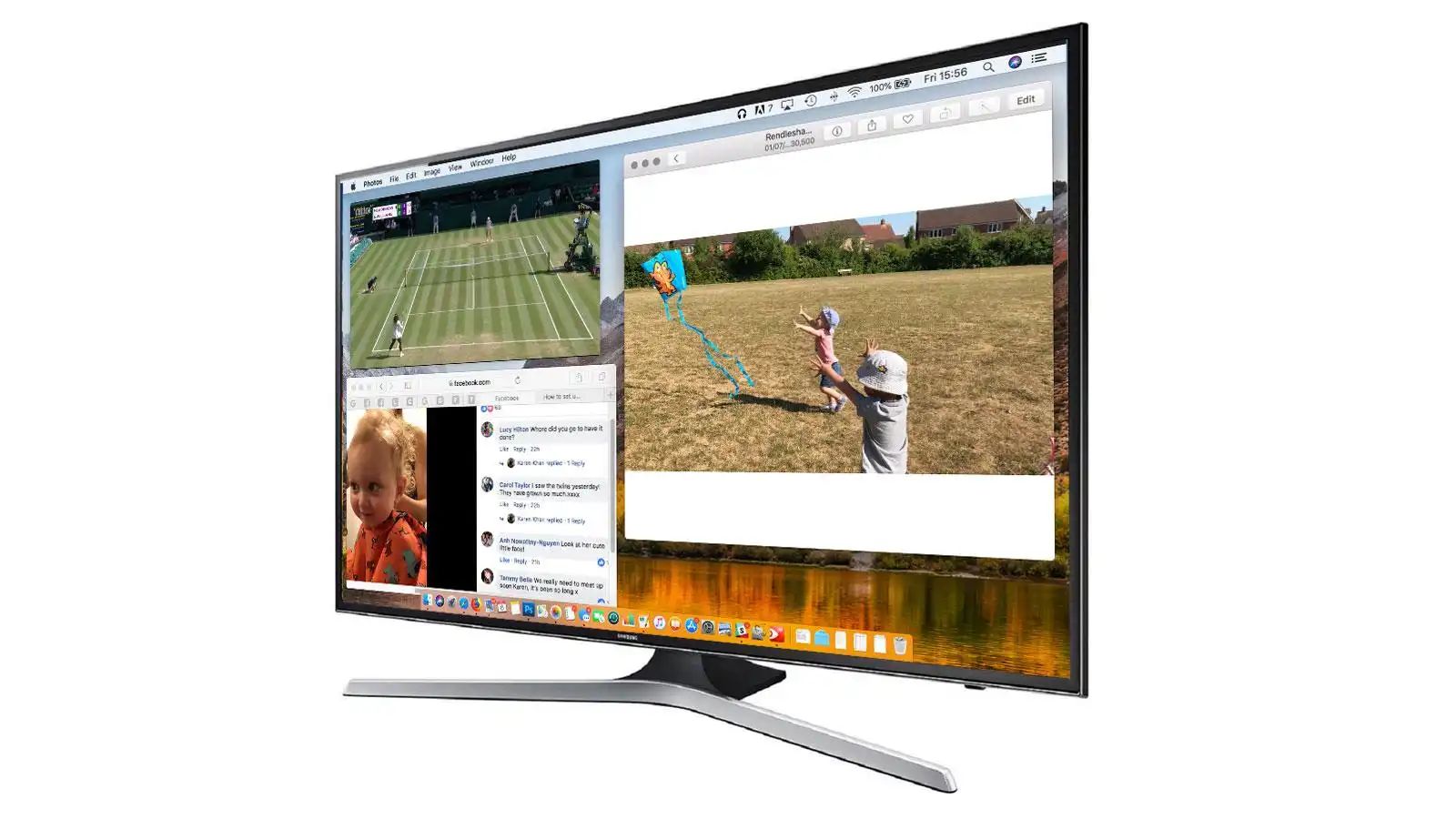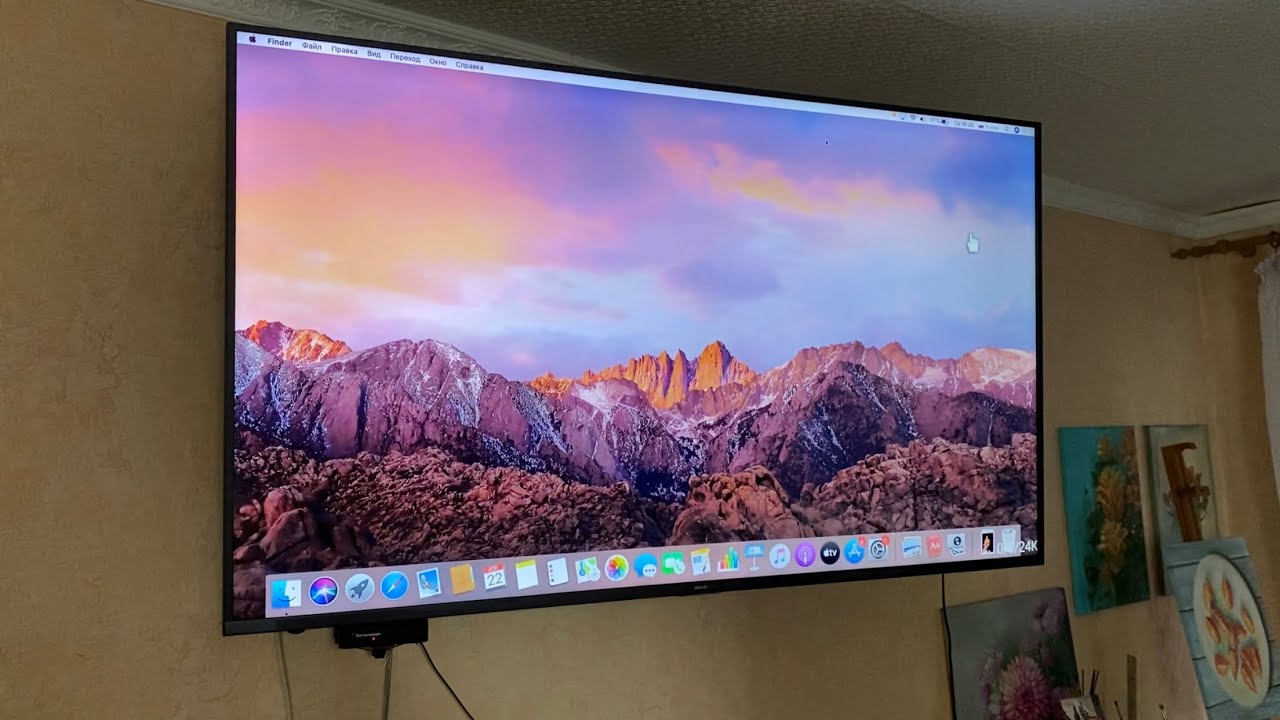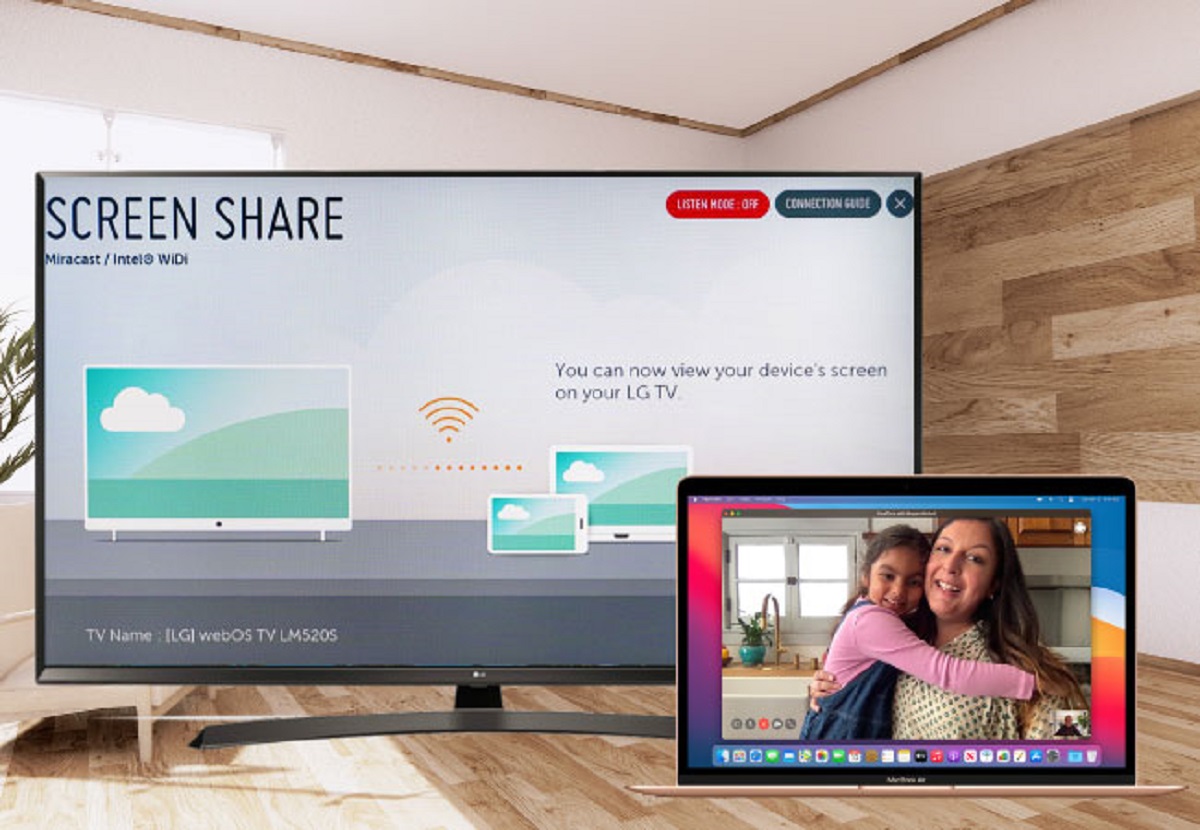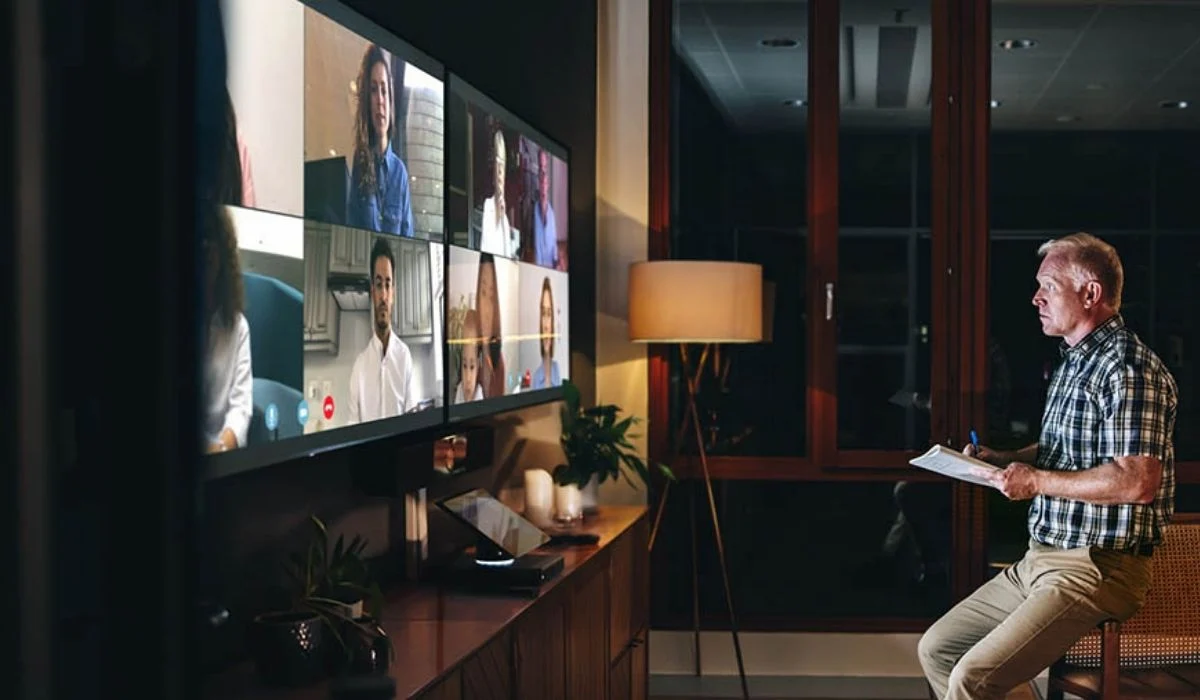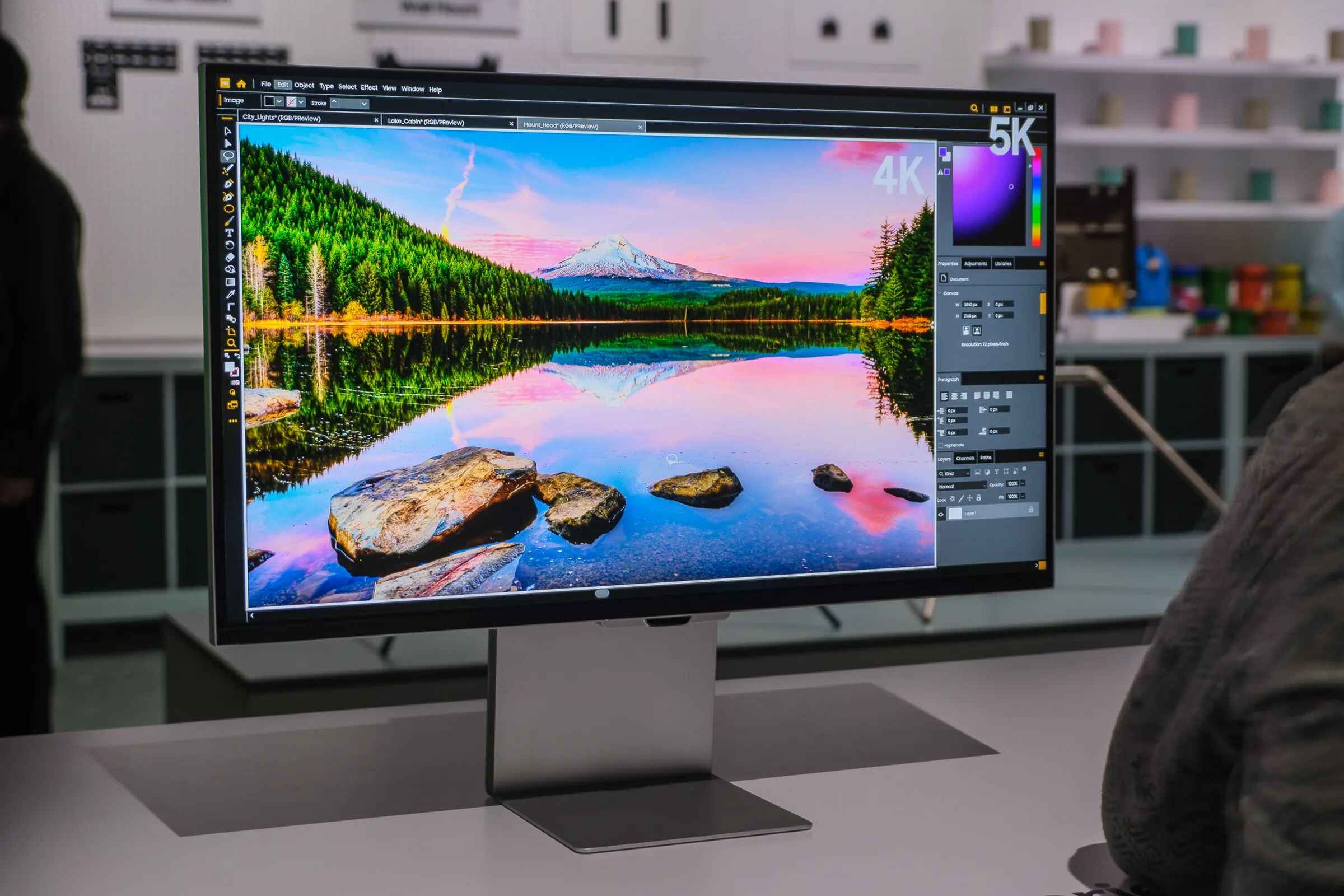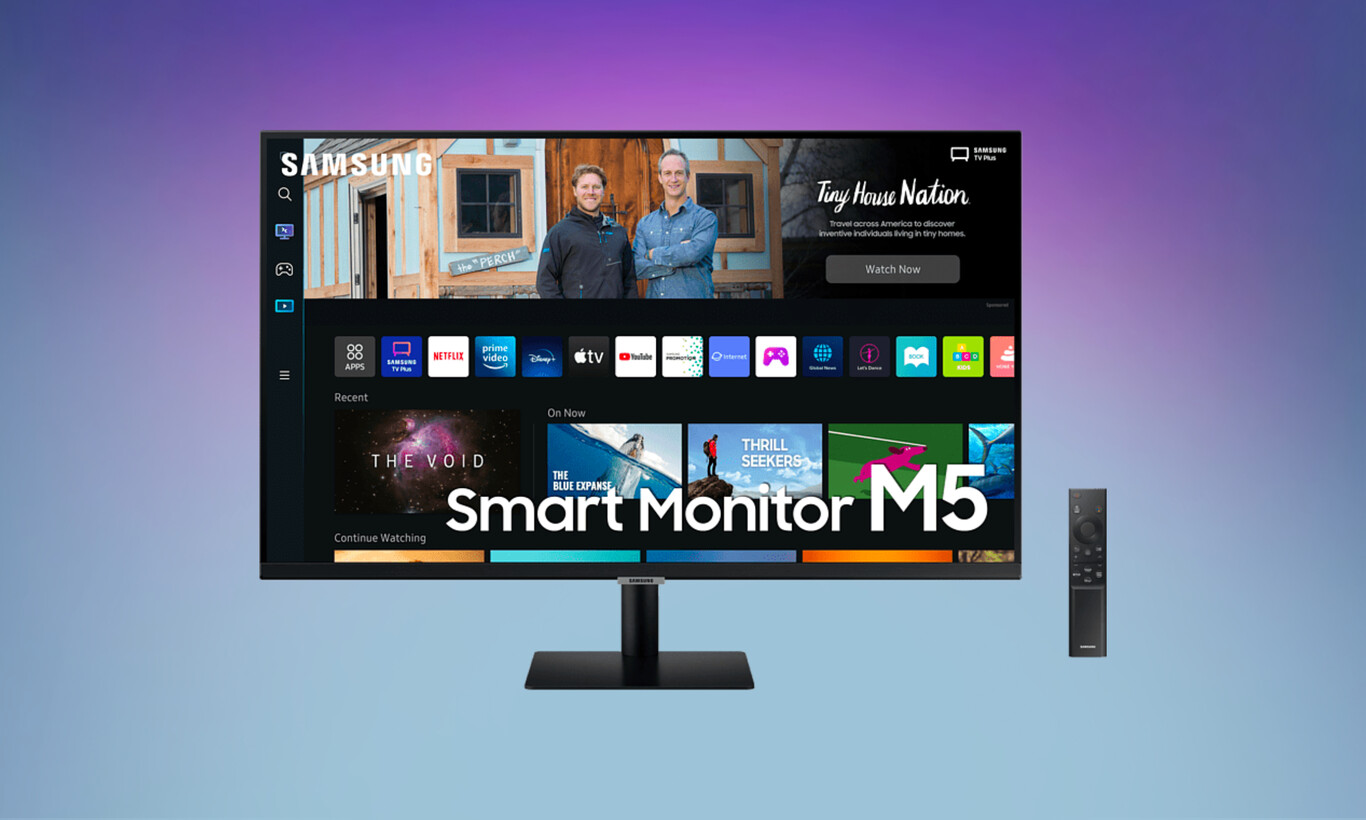Introduction
Connecting your MacBook to a Samsung Smart TV and casting your screen can be a game-changer, allowing you to enjoy your favorite movies, videos, and even work presentations on a larger screen. Whether you want to share family photos, stream content, or give a business presentation, casting your MacBook to a Samsung Smart TV offers a convenient and immersive experience.
In this guide, we will walk you through the step-by-step process of casting your MacBook to a Samsung Smart TV. By following these simple instructions, you can enjoy the benefits of screen mirroring and take your entertainment and productivity to the next level.
Before we dive into the details, it’s important to note that your MacBook and Samsung Smart TV need to be connected to the same network for the casting to work seamlessly. Additionally, make sure that both devices are powered on and in close proximity to ensure a stable wireless connection.
Now, let’s get started with the step-by-step guide to cast your MacBook to a Samsung Smart TV.
Step 1: Connect your MacBook and Samsung Smart TV to the same network
In order to successfully cast your MacBook screen to your Samsung Smart TV, both devices need to be connected to the same Wi-Fi network. This enables them to communicate and share data wirelessly.
To establish a connection between your MacBook and Samsung Smart TV, follow these simple steps:
1. On your MacBook, go to the top menu bar and click on the Wi-Fi icon. A drop-down menu will appear, displaying the available Wi-Fi networks.
2. Select the Wi-Fi network that your Samsung Smart TV is connected to. Make sure it’s the same network to ensure a seamless connection.
3. Once connected to the same Wi-Fi network, both your MacBook and Samsung Smart TV will be ready for screen mirroring.
It’s essential to ensure a stable and reliable network connection to avoid any interruptions during the casting process. If you’re experiencing connectivity issues, try restarting your router or moving closer to the Wi-Fi source for a stronger signal.
With both devices now connected to the same network, you’re ready to move on to the next step and enable screen mirroring on your Samsung Smart TV.
Step 2: Enable Screen Mirroring on your Samsung Smart TV
Before you can cast your MacBook screen to your Samsung Smart TV, you need to enable the screen mirroring feature on your television. This will allow your TV to receive and display the content from your MacBook.
To enable screen mirroring on your Samsung Smart TV, follow these steps:
1. Turn on your Samsung Smart TV and ensure it is connected to the same Wi-Fi network as your MacBook.
2. Using your TV remote, navigate to the Home or Menu screen.
3. Look for the “Screen Mirroring” or “Mirroring” option. The location of this option may vary depending on the model of your Samsung Smart TV.
4. Select the “Screen Mirroring” option. Your TV will now scan for available devices to connect.
5. On your MacBook, click on the AirPlay icon in the menu bar. It resembles a rectangle with an upward-pointing triangle. If you don’t see the AirPlay icon, go to “System Preferences” and click on “Displays”. Check the “Show mirroring options in the menu bar when available” box.
6. From the list of available devices, select your Samsung Smart TV. Your MacBook will now establish a connection with the television.
7. Once the connection is established, the screen of your MacBook will be mirrored on your Samsung Smart TV. You can now enjoy your content on the big screen.
Note: Some Samsung Smart TVs may have different names for the screen mirroring feature, such as “AllShare Cast” or “Smart View”. Refer to your TV’s user manual or the manufacturer’s website for specific instructions.
Now that you have enabled screen mirroring on your Samsung Smart TV, it’s time to move on to the next step and enable AirPlay on your MacBook.
Step 3: Enable AirPlay on your MacBook
In order to cast your MacBook screen to your Samsung Smart TV, you need to enable AirPlay on your MacBook. AirPlay is a built-in feature that allows you to wirelessly stream audio and video to compatible devices, such as your Samsung Smart TV.
Follow these steps to enable AirPlay on your MacBook:
1. Make sure your MacBook is connected to the same Wi-Fi network as your Samsung Smart TV.
2. Click on the Apple menu in the top left corner of your screen and select “System Preferences.”
3. In the System Preferences window, click on “Displays.”
4. In the Displays settings, click on the “AirPlay Display” dropdown menu and select “Samsung Smart TV” or the corresponding name of your TV.
5. Check the “Show mirroring options in the menu bar when available” box. This will enable the AirPlay icon to appear in the menu bar, allowing easy access to the screen mirroring feature.
Once you have enabled AirPlay on your MacBook, you are now ready to connect your MacBook to your Samsung Smart TV and begin casting your screen.
Note: AirPlay is available on MacBook models released in 2011 and later, running macOS High Sierra or newer. If you’re using an older MacBook model, you may need to explore other screen mirroring options such as third-party apps or hardware connections.
Now that AirPlay is enabled on your MacBook, let’s move on to the next step and connect your MacBook to the Samsung Smart TV using AirPlay.
Step 4: Connect your MacBook to the Samsung Smart TV using AirPlay
Now that you have enabled AirPlay on your MacBook, it’s time to connect it to your Samsung Smart TV and start casting your screen. With AirPlay, you can wirelessly stream the contents of your MacBook to your TV, allowing you to enjoy your favorite movies, videos, and more on a bigger screen.
Follow these steps to connect your MacBook to the Samsung Smart TV using AirPlay:
1. Ensure that both your MacBook and Samsung Smart TV are powered on and connected to the same Wi-Fi network.
2. Locate the AirPlay icon in the menu bar of your MacBook. It looks like a rectangle with an upward-pointing triangle.
3. Click on the AirPlay icon and select your Samsung Smart TV from the list of available devices. Your MacBook will establish a connection with the TV.
4. Once the connection is established, your MacBook screen will be mirrored on the Samsung Smart TV. You can now enjoy your content on the big screen.
5. To stop screen mirroring, click on the AirPlay icon again and select “Turn Off AirPlay” or “Disconnect”. Your MacBook will return to its normal display.
It’s important to note that while screen mirroring, anything you do on your MacBook will be displayed in real-time on your Samsung Smart TV. This includes watching videos, browsing websites, or working on documents. Take advantage of this feature to enhance your entertainment experience or to make presentations more impactful.
Keep in mind that certain apps or websites may have restrictions on screen mirroring due to copyright or licensing agreements. In such cases, you may encounter issues when attempting to cast specific content.
Now that your MacBook is connected to the Samsung Smart TV, you can proceed to the next step to adjust the settings for optimal screen mirroring.
Step 5: Adjust the settings for optimal screen mirroring
After connecting your MacBook to the Samsung Smart TV using AirPlay, you may want to adjust the settings to ensure the best screen mirroring experience. Fine-tuning the settings can optimize the display quality, audio output, and overall performance.
Here are some settings you can adjust for optimal screen mirroring:
1. Display Resolution: On your MacBook, go to “System Preferences” and click on “Displays”. Adjust the resolution to match the desired output size and quality on your Samsung Smart TV. Higher resolutions may offer a sharper image, but it could also require more processing power.
2. Aspect Ratio: Depending on the content you are mirroring, you may need to adjust the aspect ratio to ensure the appropriate picture size and proportions. Try different aspect ratios to find the one that suits your needs and avoids black bars or distorted images.
3. Sound Output: By default, the audio output might remain on your MacBook. If you want the sound to be played through the speakers or soundbar connected to your Samsung Smart TV, go to “System Preferences” on your MacBook, select “Sound”, and choose your TV as the output device.
4. Picture Mode and Settings on TV: Use your Samsung TV’s remote to access the picture settings. Adjust aspects such as brightness, contrast, color balance, and sharpness according to your personal preference. Experiment with different settings to find the ideal visual experience for your screen mirroring.
5. Network Stability: Ensure a stable Wi-Fi network connection to minimize any lag or buffering issues. If possible, position your MacBook and the Samsung Smart TV closer to the Wi-Fi router or consider using an Ethernet cable for a direct wired connection.
By making these settings adjustments, you can enhance the visual and audio quality of your screen mirroring experience. Experiment with different settings until you achieve the desired outcome.
Now that you have adjusted the settings for optimal screen mirroring, let’s move on to the final step, which covers troubleshooting common issues you may encounter during the casting process.
Step 6: Troubleshooting common issues
While casting your MacBook to your Samsung Smart TV can be a seamless experience, there may be instances where you encounter certain issues. Understanding and troubleshooting these common problems can help you overcome any obstacles and ensure a smooth screen mirroring process.
Here are some common issues you may encounter and their potential solutions:
1. Connection Problems: If you’re having trouble establishing a connection between your MacBook and Samsung Smart TV, ensure that both devices are connected to the same Wi-Fi network. Restarting your Wi-Fi router and ensuring a strong and stable network signal can also help resolve connection issues.
2. Lag or Delay: If you experience lag or delay when mirroring your MacBook screen, it could be due to a slow network connection or an overloaded Wi-Fi network. Try reducing other network activities or consider connecting your MacBook and Samsung Smart TV using an Ethernet cable for a faster and more stable connection.
3. Audio Sync Issues: In some cases, you may notice a slight delay between the audio and video when casting your MacBook to the Samsung Smart TV. To fix this, try adjusting the audio settings on your MacBook or your TV. You can also try restarting both devices and reconnecting them to resolve any synchronization issues.
4. App and Content Limitations: Certain apps or content may have restrictions on screen mirroring due to copyright or licensing agreements. If you’re unable to mirror specific content, consider alternative methods such as using an HDMI cable or third-party screen mirroring apps.
5. Display Quality: If the display quality is not satisfactory, check the resolution settings on both your MacBook and the Samsung Smart TV. Adjusting the resolution and aspect ratio can help improve the visual experience. Additionally, ensure that your MacBook and TV are compatible with the maximum supported resolution for optimal performance.
6. Software Updates: Ensure that your MacBook’s operating system and the firmware of your Samsung Smart TV are up to date. Software updates often include bug fixes and performance improvements that can resolve compatibility issues or enhance screen mirroring functionality.
If you encounter issues that persist even after troubleshooting, consult the user manual of your MacBook and Samsung Smart TV or visit the manufacturer’s support website for further assistance.
Now that you’re aware of common troubleshooting techniques, you’re equipped to handle any challenges that may arise during the screen mirroring process.
Conclusion
Casting your MacBook screen to a Samsung Smart TV opens up a world of possibilities, allowing you to enjoy your favorite content on a larger screen with enhanced audiovisual experiences. By following the step-by-step guide outlined in this article, you can easily connect your MacBook to your Samsung Smart TV and begin screen mirroring.
We started by connecting both devices to the same Wi-Fi network, ensuring a seamless wireless connection. Then, we enabled screen mirroring on the Samsung Smart TV and AirPlay on the MacBook. With these settings in place, we successfully established a connection between the two devices, allowing us to mirror the MacBook screen onto the Samsung Smart TV.
To optimize your experience, we outlined steps to adjust key settings such as display resolution, aspect ratio, and sound output. Fine-tuning these settings can greatly enhance the quality of your screen mirroring sessions, ensuring an immersive and enjoyable viewing experience.
We also covered some common troubleshooting techniques to overcome issues such as connection problems, lag, audio sync, and content limitations. By being aware of these potential challenges and their solutions, you can troubleshoot and resolve issues that may arise during the screen mirroring process.
In conclusion, casting your MacBook to a Samsung Smart TV is a convenient way to elevate your entertainment and productivity. Whether you’re watching movies, sharing presentations, or enjoying multimedia content, screen mirroring provides a seamless and wireless solution. With the step-by-step instructions and troubleshooting tips provided in this guide, you can effortlessly connect your MacBook to your Samsung Smart TV and unlock a world of possibilities.







